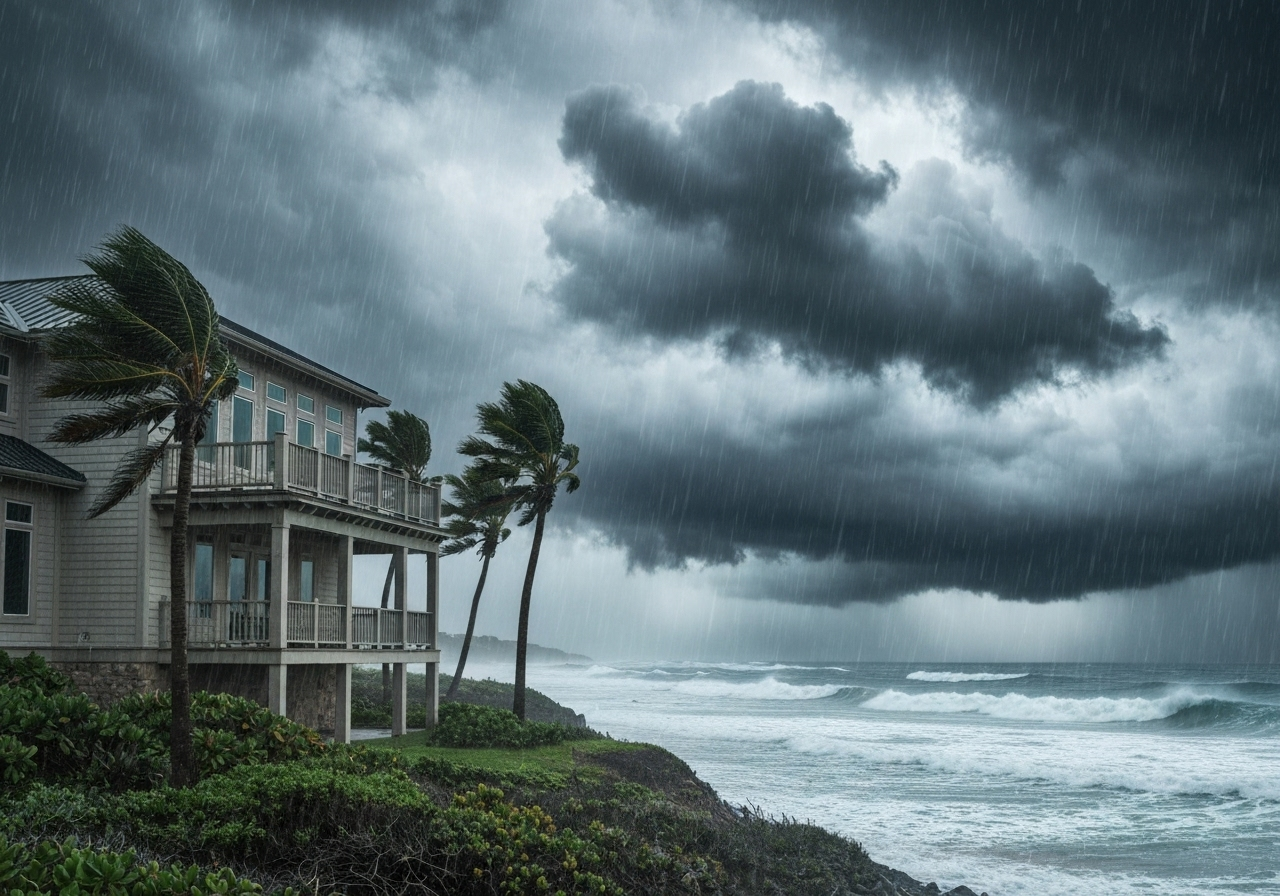Coastal Living: Why Understanding Storm Deductibles is Crucial
For homeowners in coastal regions, understanding the nuances of their home insurance policy is not just important—it’s essential for financial security. Among the most critical components are storm deductibles, which can significantly impact your out-of-pocket expenses following a weather event. Grasping the difference between Hurricane, Named Storm, and a Wind/Hail Deductible is paramount for anyone living in hurricane-prone areas, as these deductibles dictate how much you pay before your insurance coverage kicks in for various types of wind-related damage.
Coastal properties are inherently more susceptible to severe weather, making specialized deductibles a common feature in homeowners’ insurance policies. These deductibles are often percentage-based, calculated as a portion of your home’s insured value, rather than a flat dollar amount. This can lead to substantial differences in cost depending on the specific storm event and the deductible applied.
Decoding the Hurricane Deductible: What You Need to Know
A hurricane deductible is specifically triggered by damage caused by a storm officially declared a hurricane by the National Hurricane Center. The application of this deductible is precise: it typically applies when a hurricane warning is in effect for your state and the damage is directly attributable to the wind associated with that hurricane. It’s crucial to understand that if a storm is downgraded to a tropical storm before causing damage to your home, a hurricane deductible might not apply; instead, a different deductible, like an “all perils” or “named storm” deductible, could come into play. Policy language often includes specific timing factors, such as damage occurring within 24 to 72 hours before or after a hurricane’s official designation or landfall.
- Trigger: Officially declared hurricane by the National Hurricane Center.
- Application: Damage caused by wind during a hurricane warning.
- Impact: Often a higher percentage-based deductible due to the catastrophic nature of hurricanes.
Named Storm Deductibles: Broader Coverage, Key Distinctions
Named storm deductibles offer a broader scope of coverage compared to hurricane deductibles. This type of deductible applies to damage caused by any storm system that has been officially “named” by a meteorological organization, such as the National Weather Service. This includes not only hurricanes but also tropical storms, Nor’easters, and sometimes even severe winter storms, provided they have been assigned a name. If a storm is named and causes wind-related damage, this deductible would likely be activated. The key distinction lies in its inclusivity: it covers a wider range of named weather events than just hurricanes.
Understanding whether your policy uses a hurricane or named storm deductible is vital. A named storm deductible encompasses more events, potentially offering coverage where a strict hurricane deductible might not.
Wind/Hail Deductibles Explained: Your Everyday Storm Protection
The wind/hail deductible is generally the broadest of the three, applying to any damage caused by wind or hail, regardless of whether the storm is named or reaches hurricane status. This could include damage from severe thunderstorms, tornadoes, or other wind-related events that don’t meet the criteria for a named storm or hurricane. In some policies, this is also referred to as a “windstorm deductible.” This deductible provides coverage for the more common, everyday wind and hail damage that homeowners might experience, separate from the more catastrophic storm-specific deductibles.
- Trigger: Any damage caused by wind or hail.
- Application: Covers a wide array of wind and hail events, named or unnamed.
- Typically: May be a flat dollar amount or a lower percentage compared to hurricane/named storm deductibles, though this can vary by policy and location.
The Essential Difference Between Hurricane, Named Storm, and a Wind/Hail Deductible
The core difference between Hurricane, Named Storm, and a Wind/Hail Deductible lies in their triggers and the scope of events they cover. Think of it as a hierarchy of severity and specificity:
- Hurricane Deductible: The most specific, applying ONLY to officially declared hurricanes and their associated wind damage within a defined timeframe.
- Named Storm Deductible: Broader than a hurricane deductible, covering damage from any storm officially given a name, including hurricanes, tropical storms, and sometimes other severe named weather events.
- Wind/Hail Deductible: The most general, covering damage from any wind or hail event, regardless of whether the storm is named or hurricane-force. This is your baseline protection against wind and hail.
It’s common for coastal homeowner policies to have different deductible amounts for each of these categories, with hurricane and named storm deductibles typically being higher and percentage-based due to the increased risk of severe damage.
Financial Impact: Why Understanding Your Deductibles Matters
The financial ramifications of not understanding your deductibles can be severe. A percentage-based deductible, common for hurricane and named storm events, means your out-of-pocket cost is a percentage of your home’s insured value, not the damage amount. For instance, a 2% hurricane deductible on a $300,000 home means you’d pay $6,000 before your insurance covers the rest, even if the damage is much higher. If you mistake a wind/hail deductible for a hurricane deductible, you could face unexpected costs far exceeding what you anticipated.
This is why reviewing your policy annually and before hurricane season is critical. Knowing these figures in advance allows you to budget for potential out-of-pocket expenses and ensures you have adequate savings or an emergency fund to cover your portion of the claim.
Navigating Your Home Insurance Policy: Finding Your Specific Deductibles
Locating and understanding your specific deductibles within your home insurance policy requires careful attention. Your policy declarations page is the first place to look, as it summarizes your coverage limits, premiums, and deductibles. Pay close attention to sections detailing “windstorm,” “hurricane,” and “named storm” deductibles. These are often listed separately from your “all perils” deductible, which covers other types of damage like fire or theft.
If the terminology is unclear or you’re unsure how certain scenarios would be handled, don’t hesitate to reach out to your insurance agent. They can clarify policy language, explain triggers, and help you understand the financial implications of each deductible type.
Protecting Your Coastal Home: Tips for Storm Preparedness
Beyond understanding your insurance, proactive storm preparedness is key to mitigating damage and reducing potential claim costs. Here are some essential tips:
- Secure Your Property: Trim trees, secure loose outdoor items, and reinforce doors and windows to withstand high winds.
- Create an Inventory: Document your belongings with photos or videos. This makes the claims process smoother if damage occurs.
- Review Your Policy Annually: Ensure your coverage remains adequate for your home’s current value and your risk tolerance.
- Have an Emergency Plan: Know evacuation routes and have a kit with essential supplies.
- Understand Your Deductibles: Reiterate the difference between Hurricane, Named Storm, and a Wind/Hail Deductible. This knowledge empowers you to make informed decisions.
Secure Your Sanctuary: Partnering with Beach Insurance LLC
Protecting your coastal home requires more than just a policy; it demands a clear understanding of its intricacies. Navigating the complexities of hurricane, named storm, and wind/hail deductibles can be challenging, but you don’t have to do it alone. Ensuring your sanctuary is secure begins with expert guidance.






